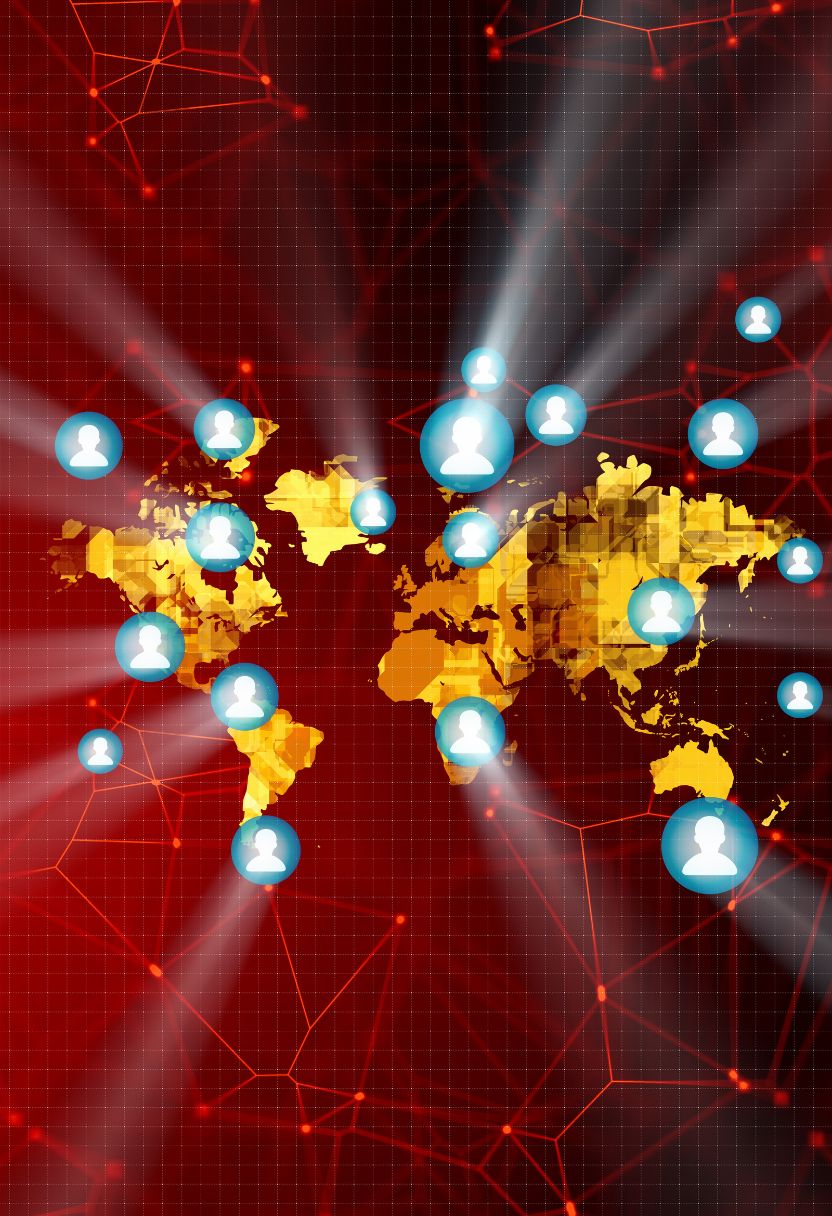

Identifying Potential Social Media Crises in Crisis Management isn't exactly a walk in the park. It demands a keen eye, an understanding of human behavior, and honestly, a bit of luck. You can't always predict when something's gonna blow up, but you can certainly prepare for it.
First off, let's talk about the warning signs. They're not always obvious. Sometimes it's just a disgruntled customer leaving a snarky comment on your latest post. extra details offered check that. Other times it could be an influencer with a beef against your brand making some noise. If you're not paying attention to these small signals, you might miss out on bigger issues brewing under the surface.
It's crucial to monitor what's being said about your brand across all platforms. There's no denying that social media moves fast - what was trending this morning could be old news by lunchtime. But if there's one thing you shouldn't do, it's ignore consistent negative feedback or complaints. These can snowball into a full-blown crisis if left unchecked.
Oh boy! Another thing to keep in mind is transparency and engagement with your audience. If people feel like they're getting the runaround or being ignored, they're going to get even more upset. And trust me, upset customers are loud customers on social media! So don't hide behind corporate jargon or scripted responses; be real and address concerns head-on.
Now let's consider timing - ain't nothing worse than having bad news drop at the worst possible moment. While you can't control everything (wouldn't that be nice?), having a plan in place helps mitigate potential damage. A good crisis management plan should include who's responsible for what, how quickly responses need to go out, and what tone those messages should take.
Lastly, remember that not every criticism requires immediate action or response. Sometimes silence is golden until you've had time to assess the situation fully. Knee-jerk reactions often make problems worse rather than better.
In conclusion (phew!), identifying potential social media crises involves vigilance, timely responses and maintaining open lines of communication with your audience without overreacting unnecessarily . Receive the inside story check this. It's definitely easier said than done – but hey nobody said managing crises was easy!
Developing a Crisis Communication Plan is no small feat, lemme tell ya. It's one of those tasks that seems simple at first glance but can quickly spiral into a labyrinth of what-ifs and worst-case scenarios. You're probably thinking, "Oh great, another plan I need to create," but trust me, this one ain't optional. If you're in any kind of business or organization, you can't afford not to have a solid crisis communication plan.
First off, let's talk about why you even need a crisis communication plan. Imagine one day your company gets hit with some unexpected bad news-maybe it's a data breach or perhaps an executive scandal. Without a pre-established strategy, you're pretty much fumbling in the dark, trying to figure out what to say and who should say it. And believe me; that's not where you wanna be when the stakes are high.
So how do you go about developing this all-important plan? Start by identifying potential crises that could impact your organization. This isn't just limited to natural disasters or cyber-attacks; think broader! It could be anything from negative media coverage to internal conflicts spilling out into the public eye. Once you've got your list of possible scenarios, prioritize them based on likelihood and impact.
Next up is assigning roles and responsibilities. You don't want everyone running around like headless chickens when something goes wrong. Designate a crisis management team and make sure each member knows their specific duties. Who's gonna handle media inquiries? Who's responsible for social media updates? Get these sorted out beforehand so there's no confusion later on.
Now comes the tricky part: crafting your messages. The key here is clarity and honesty; don't try to sugarcoat things or dodge responsibility if your organization is at fault-that'll only backfire big time! Instead, be transparent about what's happened and what steps you're taking to fix it. Oh, and don't forget empathy! Your audience needs to feel like you actually care about their concerns.
One thing people often overlook is the importance of timing in crisis communication. Getting your message out promptly can make all the difference between calming down an agitated public and letting rumors run wild. Aim for speed but don't sacrifice accuracy-sending out incorrect information can do more harm than good.
Get the scoop see it.
Alrighty then, let's not forget testing the plan! A crisis communication plan isn't worth diddly-squat if it just sits in a drawer gathering dust (or gets lost in someone's email inbox). Conduct regular drills with your team to ensure everyone knows exactly what they needa do when disaster strikes.
Finally-and I can't stress this enough-review and update your plan regularly! The business landscape changes rapidly, as do potential threats. What worked last year mightn't be effective now.
So there ya have it-a crash course in developing a crisis communication plan that'll keep you prepared for whatever curveballs life throws at ya'. Don't put it off till tomorrow because hey-you never know when you'll need it today!
Twitter, recognized for its microblogging attribute, was initially called "twttr" prior to obtaining its present name, reflecting its concentrate on succinct, real-time updates.
Snapchat introduced the idea of stories and self-destructing messages, dramatically affecting exactly how younger target markets communicate and share content online.
Pinterest, which began in 2010, transformed on-line shopping and idea sharing with its pinboard-style style, ending up being a go-to platform for do it yourself, fashion, and dish concepts.
The #MeToo movement, which began in 2017, showcases the power of social media sites in driving international movements and accentuating social issues.
Social media management, ain't just about posting pretty pictures or witty tweets anymore.. It's a whole new ball game that's crucial for businesses trying to make a mark in this digital age.

Posted by on 2024-07-14
Oh boy, where do we even start with the role of a social media manager in modern marketing strategies?. It’s like trying to juggle flaming torches while riding a unicycle on a tightrope.

Posted by on 2024-07-14
Effective social media management for brand growth isn't a walk in the park.. It's all about monitoring trends and adapting strategies, which can be quite a task.

Posted by on 2024-07-14
Transforming your social media presence in just 30 days might sound like quite the feat, but with the right strategies and insights, it's not impossible.. One of the most crucial steps in this journey is to adjust strategies based on data insights.

Posted by on 2024-07-14
These days, everyone's on social media, trying to get their content seen and shared.. But it's not as simple as just posting a picture or a status update.

Posted by on 2024-07-14
In today's fast-paced world, crisis management isn't just about responding to disasters; it's also about anticipating them. That's where monitoring and listening tools come into play. These tools ain't perfect, but they're essential for early detection in crisis management.
First off, let's talk about what these tools actually do. Monitoring tools scan various sources of information-social media platforms, news websites, blogs, forums-you name it. They look for any signs of trouble that might be brewing. Listening tools, on the other hand, focus more on sentiment analysis. They're designed to pick up on the tone and mood of conversations happening online. If people are starting to express concern or anger about something, that's a red flag.
You might think these tools are complicated gadgets only tech experts can use, but that's not true at all! Many of them are user-friendly and accessible to anyone with basic computer skills. However, don't assume they'll do all the work for you; human judgment is still crucial.
Now let's address some common misconceptions. Some folks believe that if they have good monitoring and listening tools, they won't need a crisis management team anymore. Oh boy, they're so wrong! These tools should complement your team's efforts, not replace them. The real magic happens when technology and human intuition work together.
There's also the idea that these tools are too expensive for small businesses or non-profits. Well, not necessarily! While it's true some advanced systems can cost a pretty penny, there're plenty of affordable options out there too. You don't need to break the bank to keep an eye on potential crises.
One big advantage of using these tools is speed-they provide real-time data which means you can react quickly before things spiral outta control.. Imagine there's a sudden surge in negative comments about your product on Twitter – you'd wanna know ASAP right? These tools make it possible.
However-and this is important-don't rely solely on technology for everything.. Human oversight is critical because machines can't understand context as well as we do.. For instance,, A sarcastic comment might be flagged as negative by an algorithm when it's actually harmless..
Moreover,, Sometimes false alarms happen... Just because there's buzz doesn't mean there's fire.. That's why having experienced professionals who can discern genuine threats from noise is vital...
So while monitoring & listening Tools are invaluable assets in early detection within Crisis Management,, they're no substitute 4 skilled humans behind them... Balancing both elements ensures optimal preparedness & swift responses during unpredictable situations...


In today's fast-paced digital world, a social media crisis can erupt in an instant and spiral out of control before you even have time to blink. Responding effectively during such a crisis isn't just about damage control; it's about maintaining the trust and loyalty of your audience. Here's how to navigate these turbulent waters with grace.
First off, don't think for a moment that ignoring the problem will make it disappear. Acknowledging the issue promptly is crucial. People want to know you're aware of what's happening and that you're taking it seriously. The worst thing you could do is stay silent because silence often appears as indifference or worse, guilt.
Next, transparency should be your guiding star. If you've made a mistake-and let's face it, everybody does-own up to it. Trying to cover up or deny your actions only makes things worse. Be honest with your audience about what happened and what steps you're taking to fix it. Trust me, people appreciate honesty more than polished perfection.
But wait! Being transparent doesn't mean airing all your dirty laundry either. You need to balance between giving enough information without over-sharing details that might exacerbate the situation further.
Engaging with your audience directly is another key aspect of effective crisis management on social media. Responding individually to comments and concerns shows that you care about each person's experience. It may seem daunting but it's worth every second spent understanding their point of view and addressing their grievances.
It's also super important not to get defensive when responding to criticism online-no matter how unfair it seems at times! Defensive responses can escalate the problem rather than defuse it. Instead, express empathy and offer constructive solutions where possible.
Timing couldn't be more critical in these scenarios either. Delayed responses leave room for speculation which only adds fuel to the fire burning across social media platforms like wildfire already anyway!
Lastly but definitely not leastly (yes that's a word now), evaluate the lessons learned after managing through any social media storm successfully-or unsuccessfully too for that matter! What worked? What didn't? Use this knowledge as ammunition against future crises so they don't catch you off guard again ever hopefully!
So there you have it folks: Address quickly yet thoughtfully; communicate transparently but wisely; engage sincerely while avoiding defensiveness; act swiftly always reflecting afterwards too - This ain't rocket science really though sometimes sure feels like juggling flames!
Remember: Social media crises are inevitable part & parcel nowadays especially within our hyperconnected society today unfortunately-but handling them effectively keeps reputation intact besides fostering stronger connections ultimately leaving everyone involved better prepared next time chaos strikes unexpectedly inevitably again soon enough ah well such is life!
In the realm of crisis management, one can't underestimate the importance of post-crisis analysis and recovery strategies. These processes are integral to ensuring that organizations not only survive a crisis but also come out stronger on the other side. Without a doubt, they play an essential role in stabilizing businesses after a turbulent event.
First off, let's talk about post-crisis analysis. This is where you look back at what happened and try to figure out what went wrong. It's not just about pointing fingers or laying blame; it's more about understanding how things could've been done differently. Sure, mistakes were made-no one's perfect-but identifying those missteps can prevent them from happening again. A thorough analysis involves gathering data, conducting interviews, and reviewing all actions taken during the crisis.
Now, moving onto recovery strategies-oh boy, this is where it gets tricky! Developing effective recovery plans ain't easy. Companies must ensure their strategies are adaptable because no two crises are exactly alike. You've gotta be prepared for anything and everything. Organizations should focus on restoring operations as quickly as possible while also taking care of their employees' well-being and maintaining customer trust.
One important aspect is communication; you can't ignore it! After a crisis, clear and transparent communication with stakeholders is crucial. If people don't know what's going on or feel kept in the dark, mistrust will build up fast. Regular updates about recovery progress help reassure everyone involved that things're getting back on track.
Training and drills are another key component of successful recovery strategies. Employees need to be well-versed in emergency procedures so they don't panic when something goes south next time around (and there will always be a "next time"). Simulated scenarios can help staff practice their responses in a controlled environment.
Financial stability also needs attention during recovery efforts-let's face it: money matters! Companies often have to deal with unexpected expenses post-crisis which can strain resources significantly if they're unprepared for such eventualities.
Lastly-and this shouldn't be overlooked-is learning from experience itself-the ultimate teacher really! Every crisis provides valuable lessons that contribute towards building resilience within an organization over time by refining existing protocols based on real-world experiences rather than hypothetical situations alone.
In conclusion folks: Post-crisis analysis helps us learn what went wrong while recovery strategies guide us through putting pieces back together again-all aimed at making our future selves better equipped against adversities yet-to-come...so don't skimp out here-it's worth every bit effort invested into these vital aspects of comprehensive crisis management framework!


Case Studies of Successful Social Media Crisis Management
In today's digital age, social media is a double-edged sword. While it can boost a company's image in seconds, it can also bring it crashing down just as quickly. When a crisis hits, how a company handles the situation on social media can mean the difference between saving face and sinking further into trouble. Let's dive into some case studies of successful social media crisis management that show how companies turned potential disasters into opportunities.
First up is the famous example of Oreo during the 2013 Super Bowl blackout. When the lights went out in the stadium, many brands were left scrambling to figure out what to do next. But not Oreo! They saw an opportunity and seized it with their quick-witted tweet: "You can still dunk in the dark." This simple yet clever message not only entertained audiences but also showcased Oreo's ability to stay relevant and engaging even when things don't go as planned.
Another great example is JetBlue's response during their Valentine's Day crisis back in 2007. A massive ice storm left passengers stranded on planes for hours, and people were understandably furious. Instead of hiding from the backlash, JetBlue took full responsibility and issued a heartfelt apology video from their CEO on YouTube. They didn't stop there – they also introduced a Customer Bill of Rights that detailed compensation for affected passengers. Their transparency and willingness to make amends turned what could've been a PR nightmare into a demonstration of genuine care for their customers.
Then there's Starbucks' approach during their controversial #RaceTogether campaign in 2015. The initiative aimed at sparking conversations about race relations received mixed reactions and quite a bit of criticism online. Yet Starbucks didn't retreat or abandon ship; they engaged with critics openly on social media platforms like Twitter, explaining their intentions while acknowledging people's concerns. By not shying away from difficult conversations, Starbucks managed to maintain its reputation as a socially conscious brand.
Lastly, let's talk about Domino's Pizza back in 2009 when two employees posted an unsavory video involving food tampering that went viral. It was ugly – no doubt about it! But Domino's didn't ignore or dismiss it; instead, they responded swiftly by addressing both traditional media outlets and social media directly with apologies and updates on how they were handling the situation internally. Their proactive stance helped regain customer trust over time.
In conclusion (oh wait), these case studies highlight something crucial: timely responses combined with honesty and creativity are key elements in managing social media crises effectively (who would've thought?). Companies that acknowledge issues head-on rather than sweeping them under the rug tend to come out stronger after facing public scrutiny – proving once again that it's not just about what happens but how you respond matters most!
So yeah... whether you're dealing with blackouts at major events or dealing with disgruntled customers stranded due to weather conditions – remember these lessons from Oreo, JetBlue ,Starbucks ,and Domino's . They've shown us all that even amidst chaos lies opportunity if handled right!